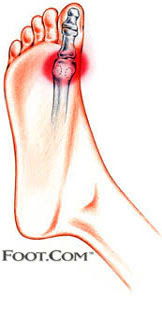I now have a facebook account - and I invite you all to become my friend! If you have an account just search for me.... Deborah Vogel. (there are actually 10 women on facebook with my name - but I'm the only one holding a spine:)
Also.... I'm uploading videos to YouTube! You can subscribe to my Dance Smart Channel at
http://www.youtube.com/user/dancesmart Or... just search Deborah Vogel and you'll find me too!
Onto the questions....
I returned to ballet about 5 years ago. I have been getting some pain in my knees which was diagnosed by my physiotherapist as anterior knee pain caused by weak thigh muscles.
A new teacher at my ballet school said that my hyperextended knees would also be causing the problem. I am working with her to try and stand straight without locking the knees but I am having problems trying stand properly on one leg while working the other.
Any help that you give would be much appreciated as all my teachers have differing opinions on hyperextended knees.
I am now 28 and also suffer from pronation.
Thank you
Kirsty
The three issues you mentioned, weak thigh muscles, hyperextended knees and pronated feet all go together. The good thing is as you start to address all 3 of them at the same time your knees should start to quickly feel better!
I'm assuming your physiotherapist is giving you quad strengthening exercises - so I won't talk about them except to say that a single leg demi plie is a wonderful strengthener! (As long as your knees and feet are in alignment)
My opinion on hyperextension is that it creates a beautiful line in the air - and - needs to be controlled on the ground. When the knees go back into hyperextension the thighbone rotates inward, and the feet tend to pronate. This definitely opposes your goal of maintaining good turnout!
It's not easy to change a chronic habit of hyperextending the knees - but it is well worth it! You can monitor your knees from your feet, making sure the weight is equal on the 3 points of the feet. You can also catch yourself dropping into your legs (as most dancers with hyperextended knees are rather loosey-goosey) and put your hand on top of your head and press into your hand, lengthening your spine. Practice balancing on one leg (not in hyperextension) to help your nervous system learn where the center of the joints are. It will take some time to change the habit - but I have seen many dancers do it!
Good luck!
*~*~*~*~*~*~*~*~*~*~*~**~*~*~*~*~*~*~*~*~**~*~*~*~*~*~*~*~*~*
I am just into my pregnancy and work as a contemporary dancer and physical theatre performer. I hope not to stop my work and performances until my 7th or 8th month. However I know that I will have to modify my work and I'm game for that. I can't seem to find a good resource -- a book, a detailed article, anything! -- that explains what activity should be modified and how to modify the activity as time goes on. Most of what I've found is very
general or specific to elite athletes like runners. Do you have any recommendations?
Sincerely
Lucy
I don't know of any specific resources to send you to, Lucy, so I will give you my personal opinion after having 3 of my own - and counseling a few friends through their pregnancy and births.
The first is - your iliopsoas is going to take a beating with being pregnant. As the baby gets bigger, the pull on your lower back is significant. The one stretch you
 cannot stop doing is some form of iliopsoas stretching. (I actually have a youtube video on 3 different ways to stretch your psoas) The one stretch that I don't have on this video is a sitting stretch - but here it is on the right.
cannot stop doing is some form of iliopsoas stretching. (I actually have a youtube video on 3 different ways to stretch your psoas) The one stretch that I don't have on this video is a sitting stretch - but here it is on the right. Ballwork all around the pelvis will be very useful for keeping the muscles looser. As your belly pulls the pelvis into a forward tilt, the abdominals contract to counter that and the gluteals also tend to contract more than normal to keep your pelvis upright.
Continuing dancing will help keep the abdominals in good shape - and stretching and ballwork will definitely help the gluts!
Those are my primary tips for a healthy pregnancy. It goes without saying that listening to your body is key - and - it is an amazing process that you are engaged with. Typically, the pregnant dancers I've known have, for the most part, had easier pregnancies than non-dancers. They danced as long as they were comfortable - and easily modified their movement. (for example, rolling down the spine becomes almost impossible - so do hamstring stretches standing with your leg on a chair instead) I truly enjoyed all 3 of my pregnancies. Best wishes and...
Congratulations!
Deborah
"Education is the key to injury prevention"

















